The Cornell Lab Bird Academy › Discussion Groups › Nature Journaling and Field Sketching › Giving Your Drawings Depth
-

-

-
Shading and texture are coming more easily - though I always feel I am drawing with lines that are too dark. I need to "lighten up!" Also, proportion seems to be getting better. I find gesture drawing with moving objects really difficult. I captured a gesture of the pintail from the video and then went back and refined it with the video paused. It was great practice.


-
I'm finding the negative space and value techniques are really helpful. I am worried that I won't have anywhere near enough time in the field to capture enough information to fill in detail later, once the subject has moved on. I guess with practice comes confidence!

-

-
 Yes this was pretty interesting. But tedious. I wasn't sure I had the attention span but I kept going and completed the pix. As true as I tried to be with the interior lines, they are still wonky but look ok anyway.
Yes this was pretty interesting. But tedious. I wasn't sure I had the attention span but I kept going and completed the pix. As true as I tried to be with the interior lines, they are still wonky but look ok anyway. -
Certain shading techniques now seem suggested by the the subject, for example, hatching for the markings on the wren's tail feathers or stippling on the cattail reed. The negative space concept (ingrained by the upside down drawing) was very useful in getting proportion and shape of the wren to reed areas. My biggest downfall is with rapid gesture drawing (my third attempt at a one minute wren yielded woefully inaccurate proportions). There seems to be inadequate time to hold out the pencil to measure and still get the shapes and essence down. Hopefully it will improve with practice. In my refined drawing the wren appears to be more in profile than the photo depicts. Perhaps a problem with the eye position or shape or the beak or neck shading...?


-
 The exercise made me look more closely at the bird and identify some of the markings that I had not seen before. the Wings were very hard until I decided not to put so much detail into them.
The exercise made me look more closely at the bird and identify some of the markings that I had not seen before. the Wings were very hard until I decided not to put so much detail into them. -
Was a challenging exercise. I chose to do the wren.I think I would need a reference photo for a more finished sketch from a field sketch. Not sure my phone camera would get the detail. I'll have to see.
 The birds/animals wouldn't sit still long enough to get something refined. Most useful is the negative space concept and getting the general shapes.
The birds/animals wouldn't sit still long enough to get something refined. Most useful is the negative space concept and getting the general shapes. -
 Challenges: distinguishing drawings to illustrate the bird's "marks" (like dots & feathers) from shadows.
Techniques: chiaroscuro, cross-hatching, blending, contour hatching, paying attention to shapes & negative space.
Challenges: distinguishing drawings to illustrate the bird's "marks" (like dots & feathers) from shadows.
Techniques: chiaroscuro, cross-hatching, blending, contour hatching, paying attention to shapes & negative space. -
Contour hatching and short sketchy lines come easiest to me. I find that proportion and breaking subject down into shapes and relations are most difficult. Making short sketchy lines is most helpful.
-

-
This was fun. I have been watching an "eagle cam" to practice gesture drawing and decided to use one with the Mom (?Dad) incubating the eggs (2), adjusting the grass lining of the nest. The most difficult for me was the feathers. I am still working on techniques for just giving the suggestion of feathers, not having to draw each one.

-
The shape of animals always messes me up. It always takes me a long time to decide what the shape is. However, adding small, distinctive details helps me see what the animal is, like spots on feathers, bumps on skin, etc.


-
I really enjoy going back to this sketch, I usually work with watercolors, and working with a pencil, gave me a different way to see those little details.

-
This is gorgeous, Victoria! Love it!! This little wren is also my favorite. The first to sing in the morning, she motivates me for work each day! Beautiful!
-
-
 Negative space and portion are the hardest for me. I was wishing I had a blending stick for this on. The quick gestures and upside down drawing seem to be the most helpful.
Negative space and portion are the hardest for me. I was wishing I had a blending stick for this on. The quick gestures and upside down drawing seem to be the most helpful. -
I've gotten interested in seeing and drawing negative space now that I better understand what it means. I also used the squint test to assess lights and darks. Getting proportions right is still difficult. Sighting with my pencil remains tricky. But I am trying to look more for how parts of the subject relate to each other. Above all, I think I need patience! Do a little. Set it aside. Then do a little more. I may not like what I am working on. But if I set it aside and come back, it may not seem as bad and I can see what I need to work on.

-
I am using all the drawing skills you have introduced. I can see progress and improvement in seeing and capturing more detail. I am using negative space along with proportion and relationship of shapes and lines and feel it is coming together for me. I painted when I was younger but didn’t seem to have the time to work on it too often. I retired in April 3 weeks after the stay at home order. I have very much enjoyed sketching and working on my art again. I am having so much fun and I am sketching on a daily basis. I think this is the most helpful impact, just taking the time to sit and try to capture the birds or whatever I see. Pat

-
 Not finished yet, but progressing.
Not finished yet, but progressing. -
I think drawing negative shapes is by far the most helpful skill for this exercise in my opinion. What was more difficult for me was measuring proportions.


-
This course has just been so wonderful. I have never drawn a thing in my life but decided to take this course as a nature lover, and as covid pastime. It has opened up a whole new world to me on so many levels. Here is my fox:

-
Love the Fox face
-
-
I was wondering, are you drawing these images the same size as you see them? Or scaling up or down? is your image right next to your paper or in front of you? How might these ideas change the difficulty level of these drawings? I have trouble drawing something a very different size from its actual size.
-

-
Getting the shapes and proportions right are the hardest aspects of sketching for me. I find I am using negative space more and it is helpful, and I like adding texture and value. My initial gesture drawing of the fox was very rough but had a certain dynamism which I am not sure is there in the more polished sketch.


-

 Sketches and refining a sketch. Proportions are very difficult
Sketches and refining a sketch. Proportions are very difficult -
Very nice duck
-
Read More:
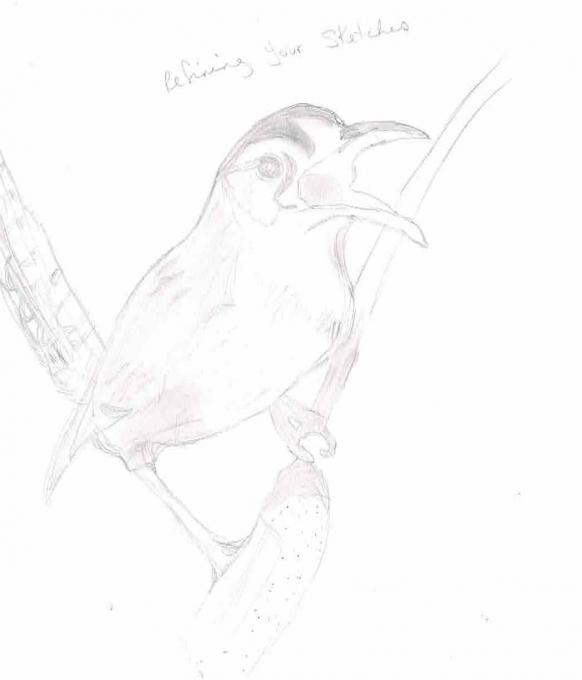
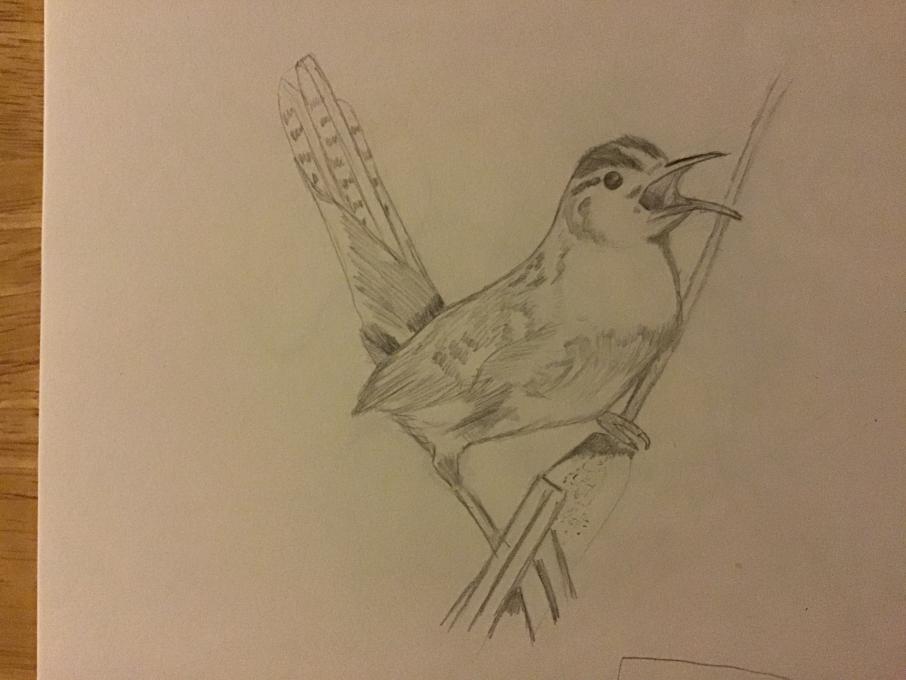
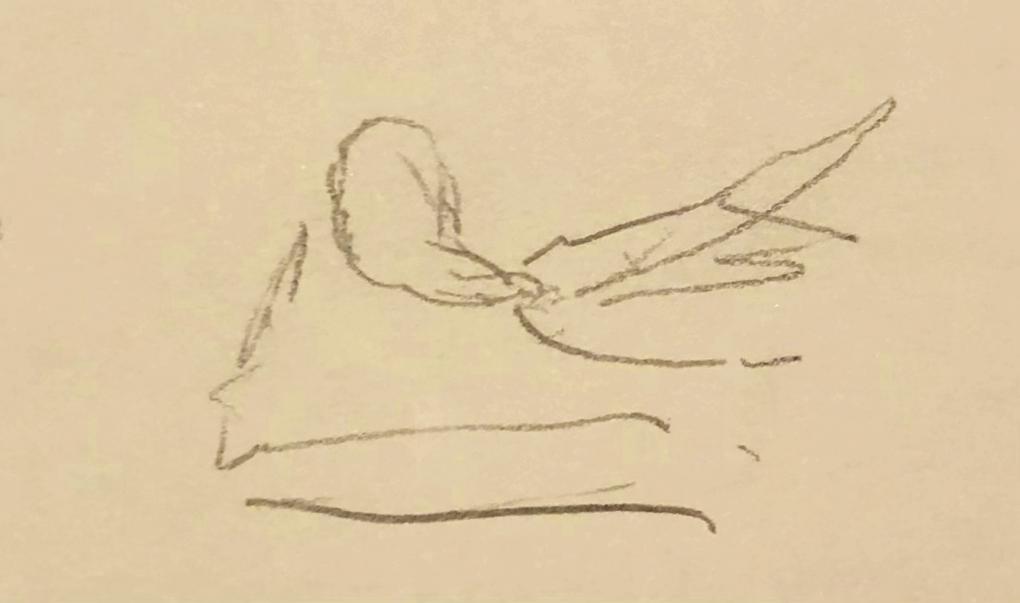
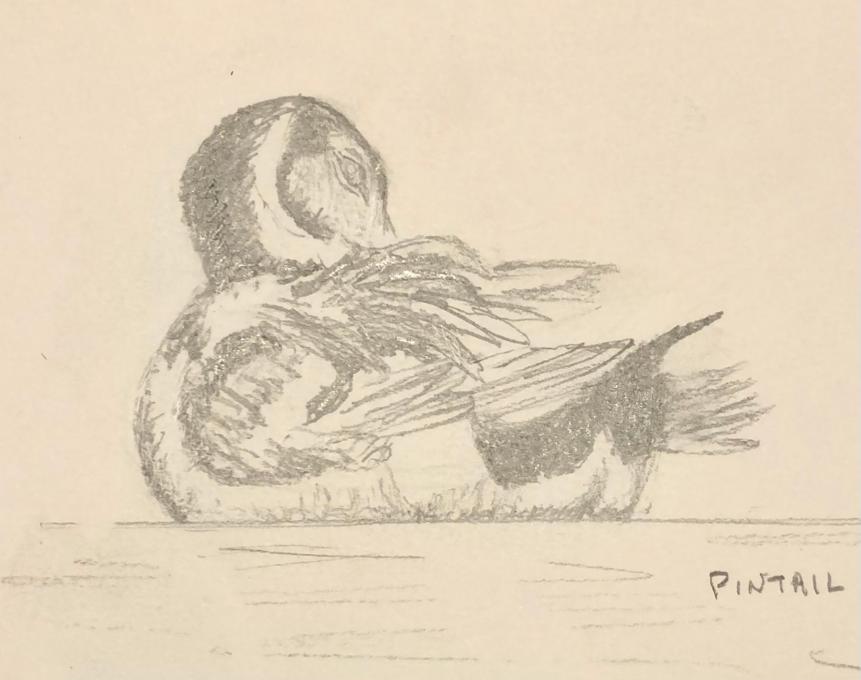
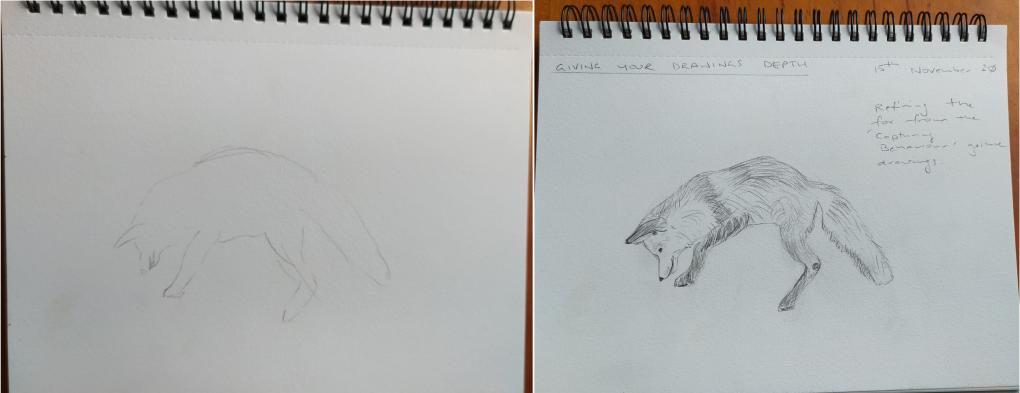
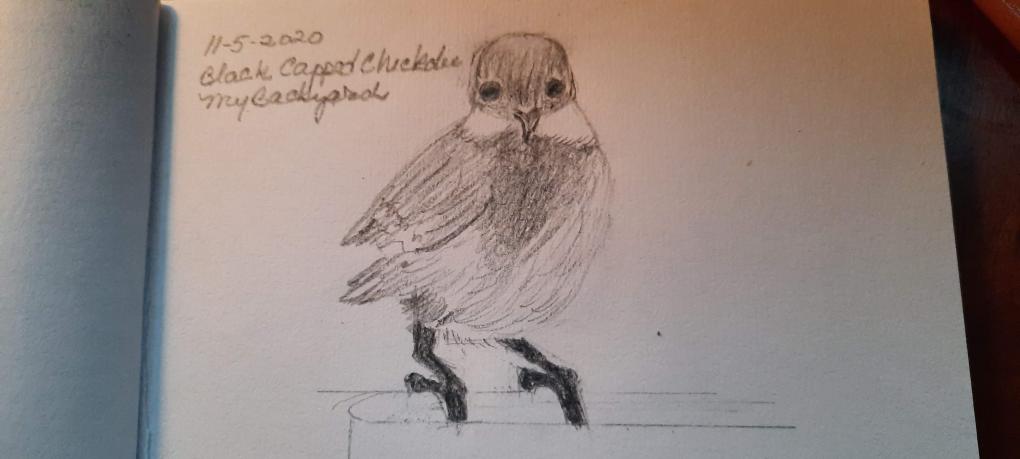
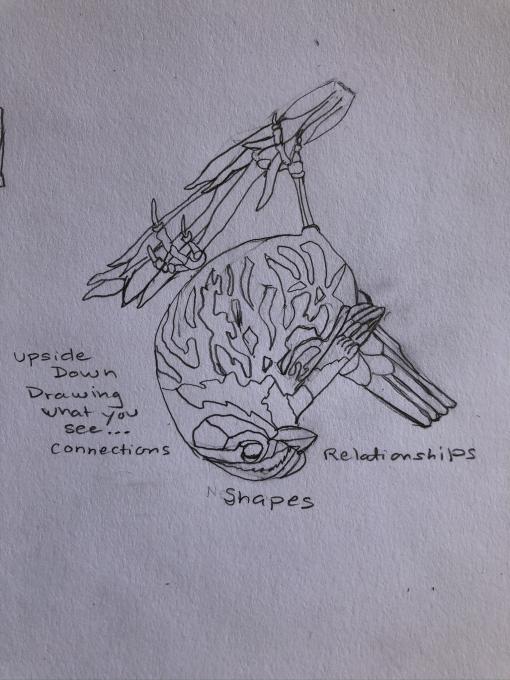 Yes this was pretty interesting. But tedious. I wasn't sure I had the attention span but I kept going and completed the pix. As true as I tried to be with the interior lines, they are still wonky but look ok anyway.
Yes this was pretty interesting. But tedious. I wasn't sure I had the attention span but I kept going and completed the pix. As true as I tried to be with the interior lines, they are still wonky but look ok anyway. 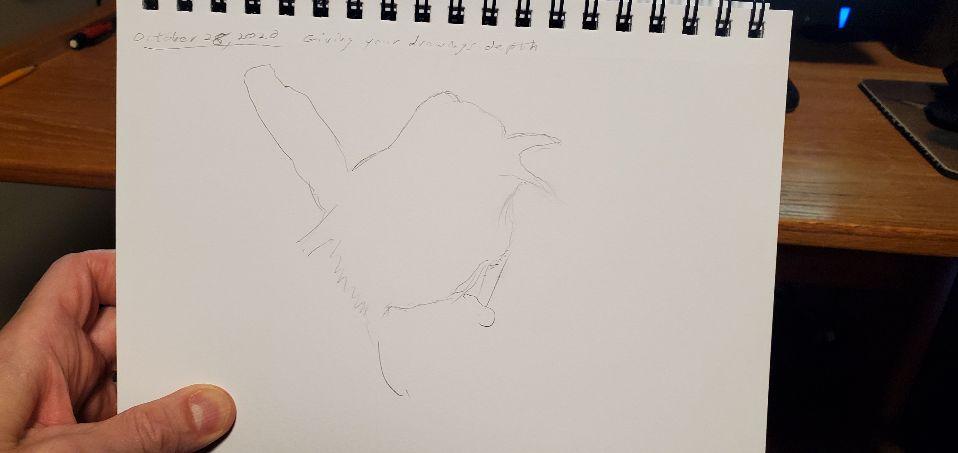
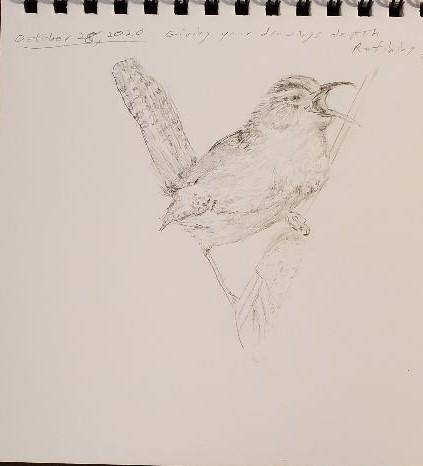
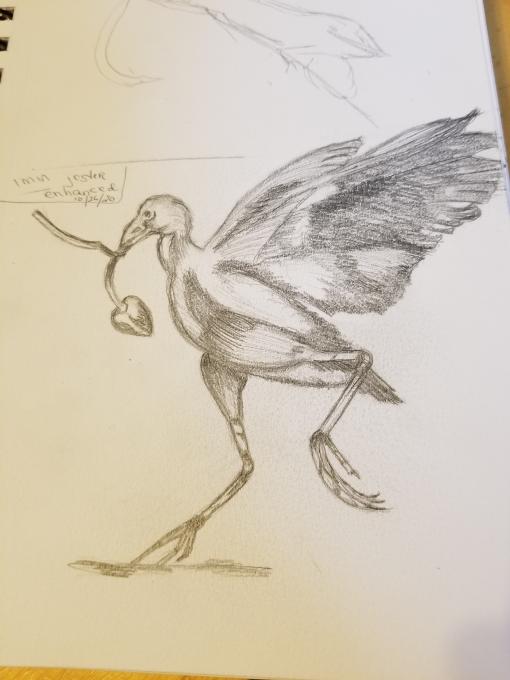 The exercise made me look more closely at the bird and identify some of the markings that I had not seen before. the Wings were very hard until I decided not to put so much detail into them.
The exercise made me look more closely at the bird and identify some of the markings that I had not seen before. the Wings were very hard until I decided not to put so much detail into them. 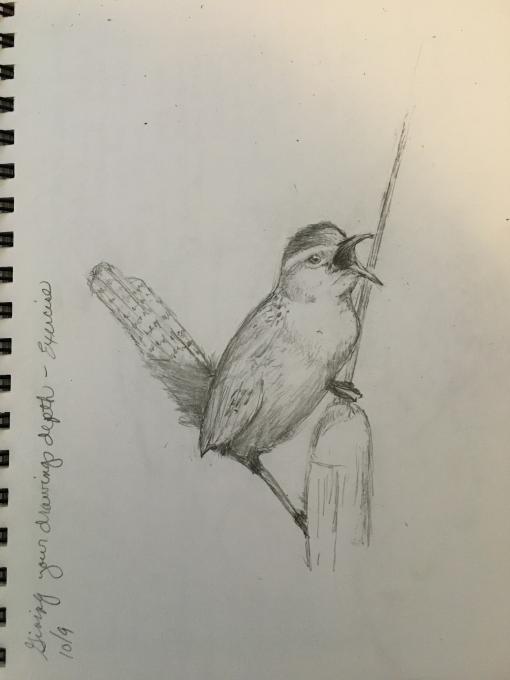 The birds/animals wouldn't sit still long enough to get something refined. Most useful is the negative space concept and getting the general shapes.
The birds/animals wouldn't sit still long enough to get something refined. Most useful is the negative space concept and getting the general shapes. 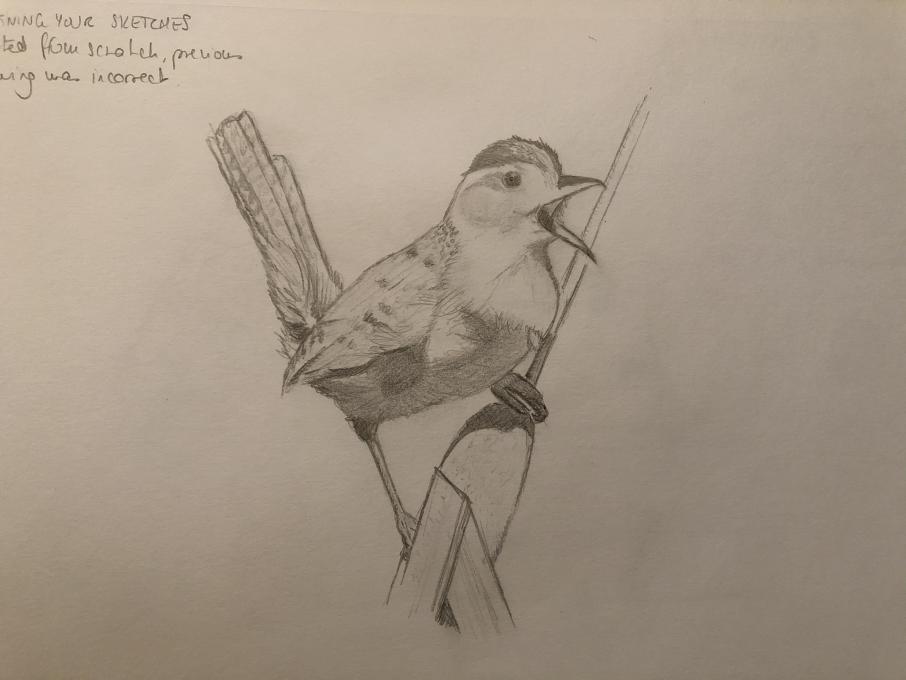 Challenges: distinguishing drawings to illustrate the bird's "marks" (like dots & feathers) from shadows.
Techniques: chiaroscuro, cross-hatching, blending, contour hatching, paying attention to shapes & negative space.
Challenges: distinguishing drawings to illustrate the bird's "marks" (like dots & feathers) from shadows.
Techniques: chiaroscuro, cross-hatching, blending, contour hatching, paying attention to shapes & negative space. 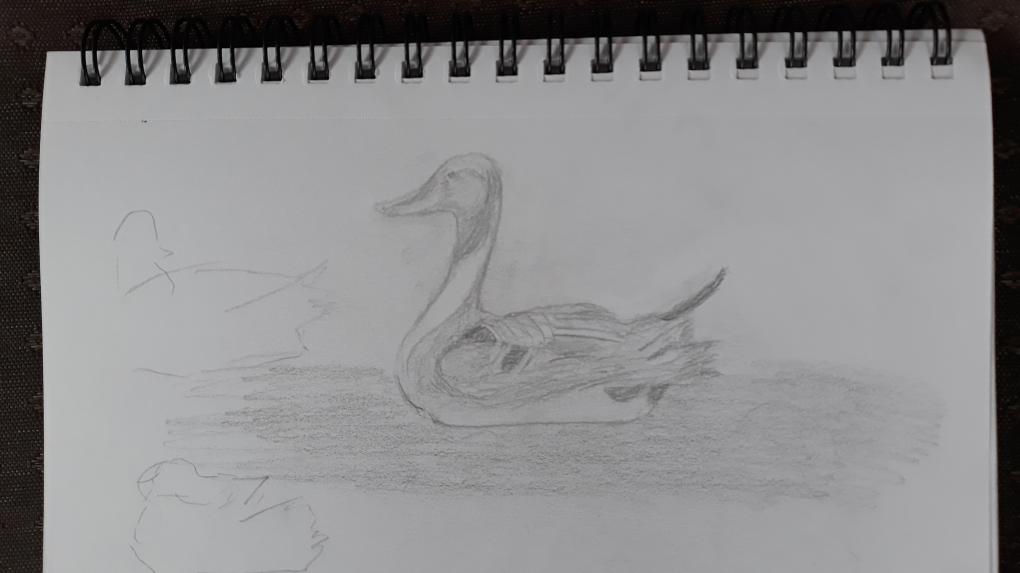
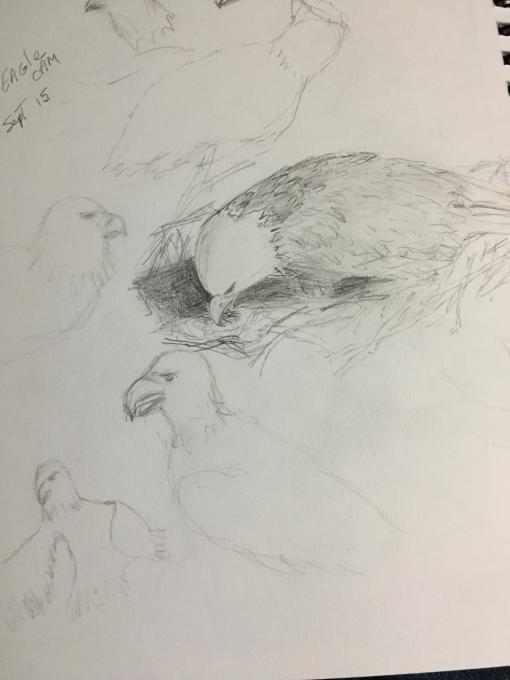
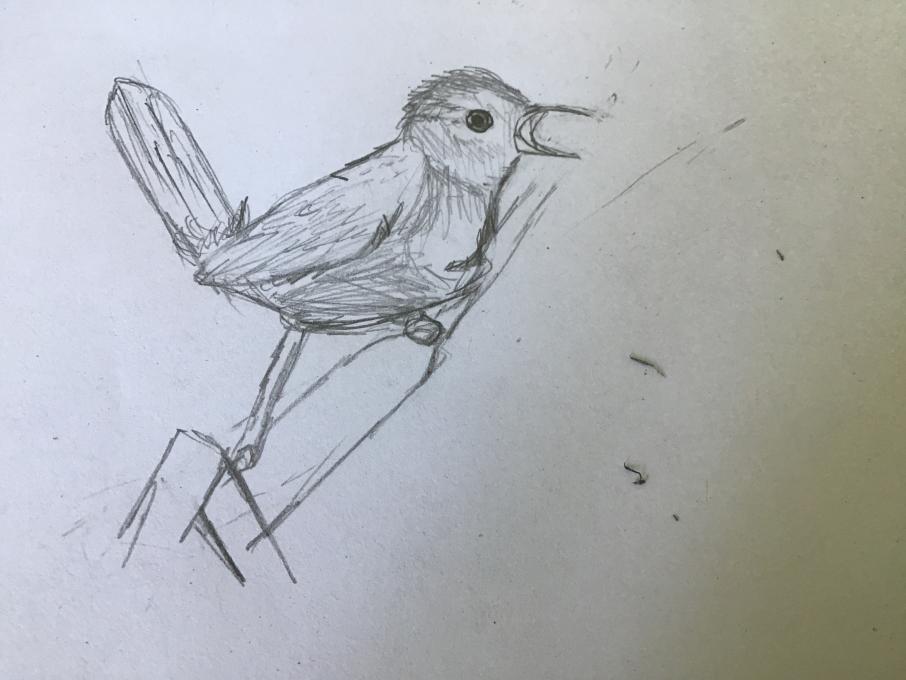
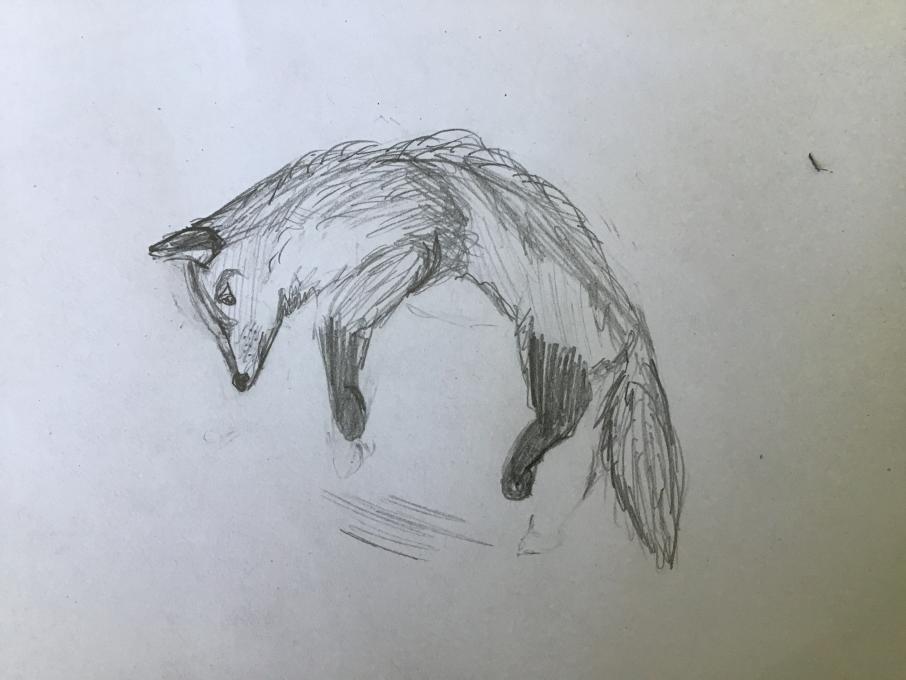
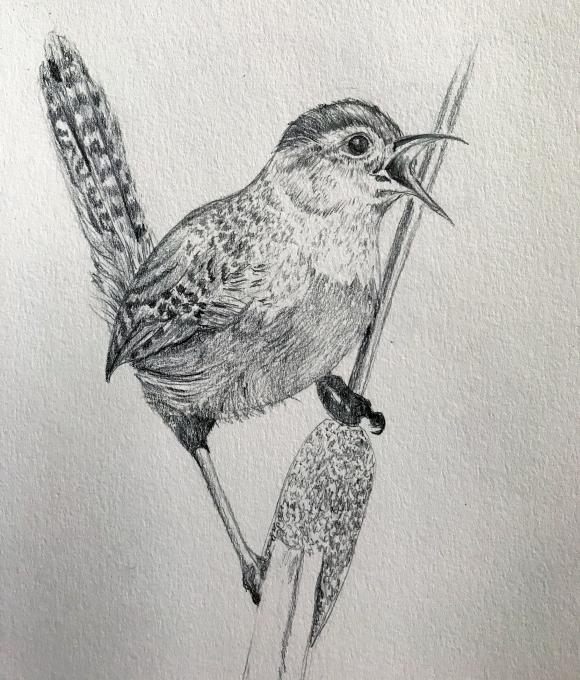
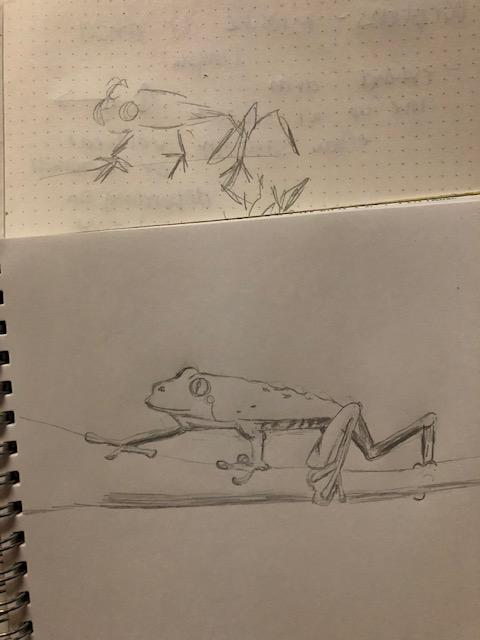 Negative space and portion are the hardest for me. I was wishing I had a blending stick for this on. The quick gestures and upside down drawing seem to be the most helpful.
Negative space and portion are the hardest for me. I was wishing I had a blending stick for this on. The quick gestures and upside down drawing seem to be the most helpful. 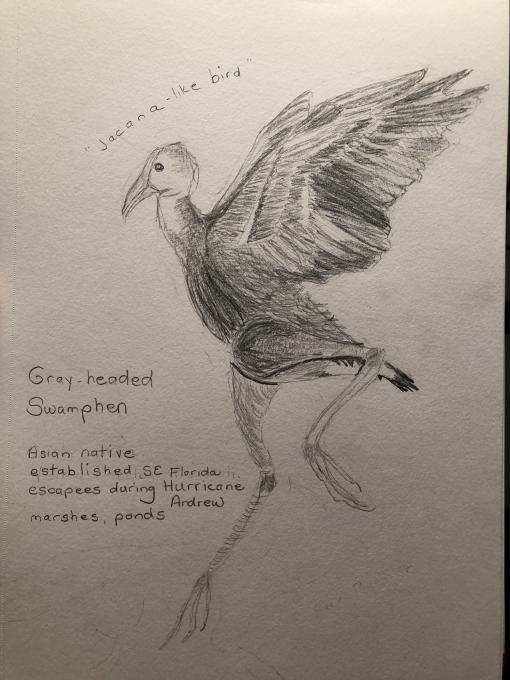
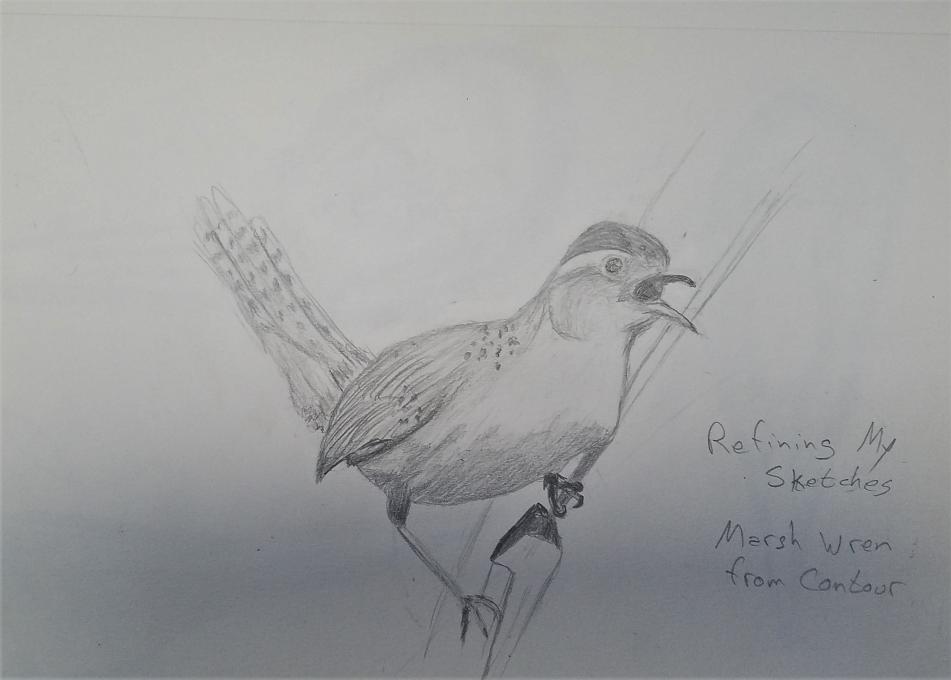
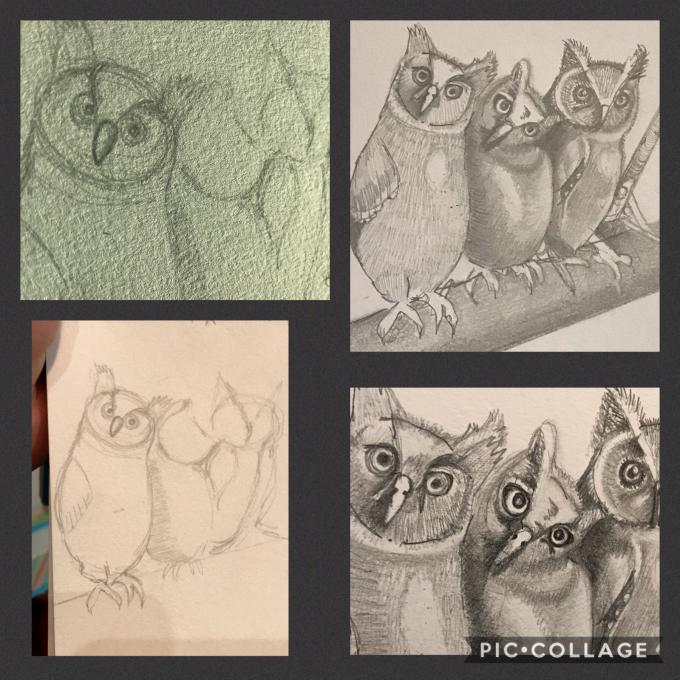 Not finished yet, but progressing.
Not finished yet, but progressing. 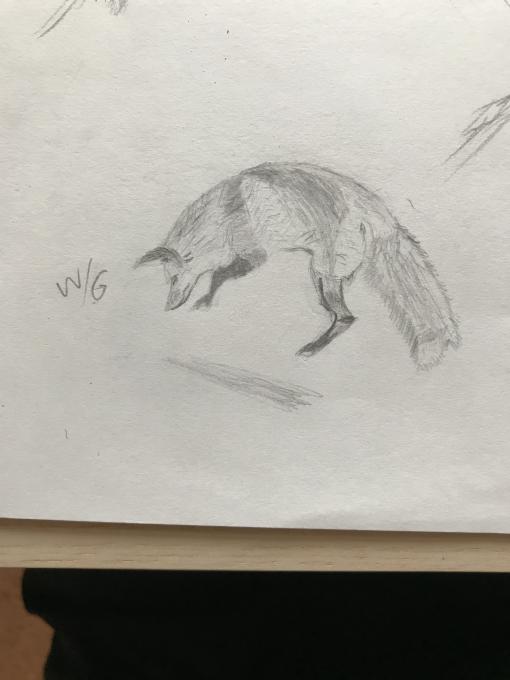
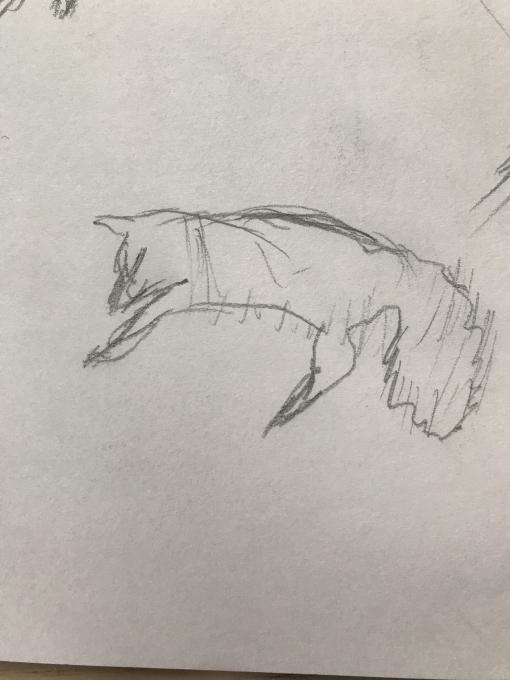
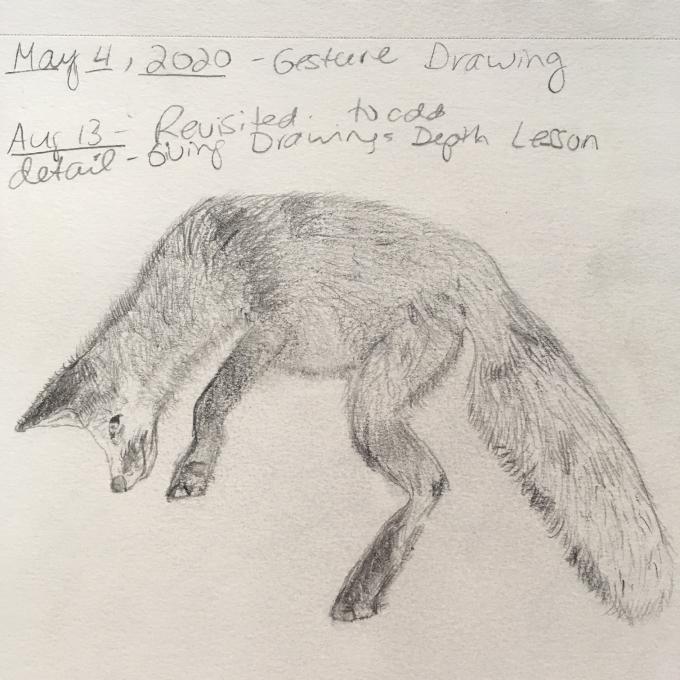
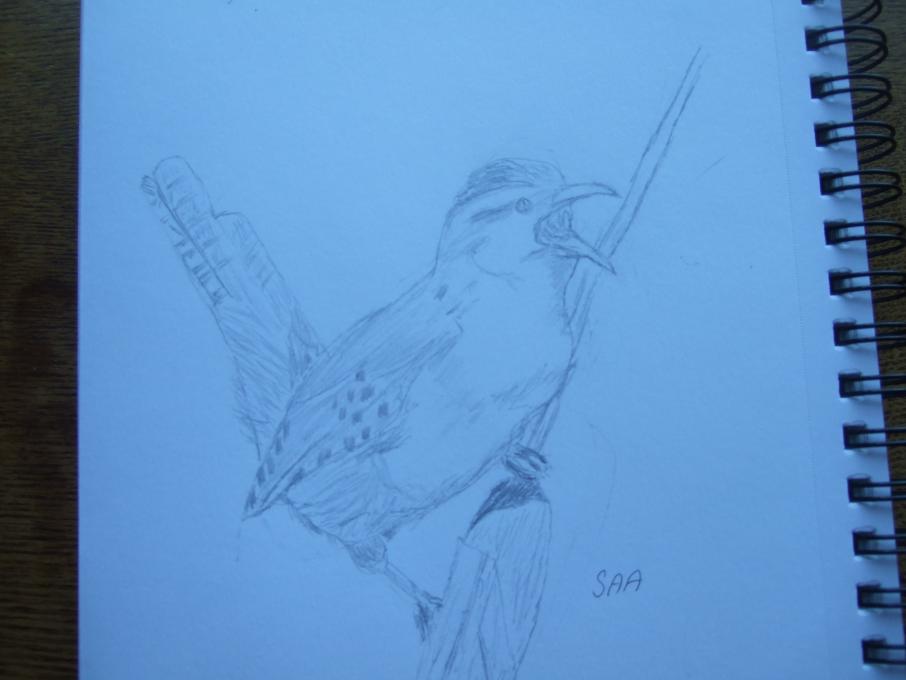
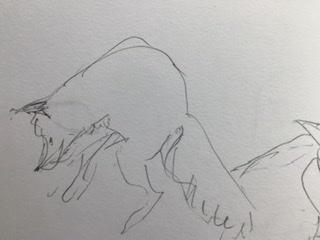
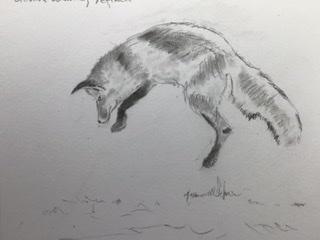
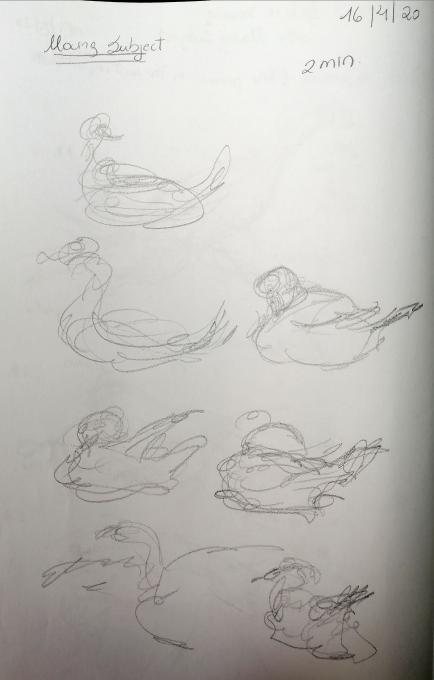
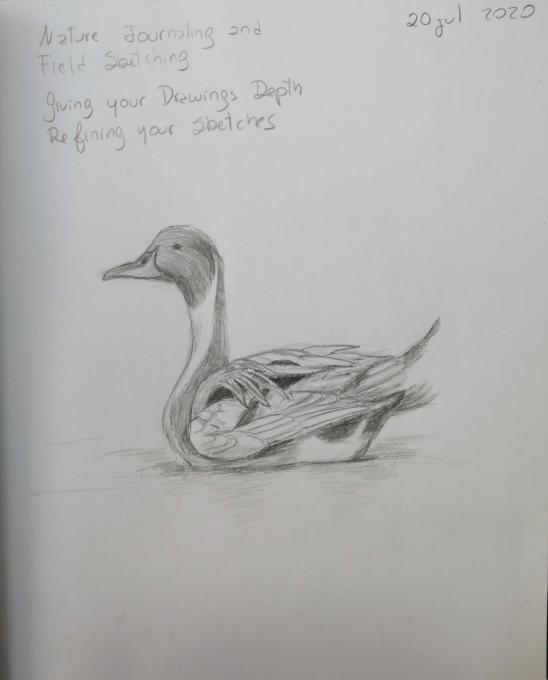 Sketches and refining a sketch. Proportions are very difficult
Sketches and refining a sketch. Proportions are very difficult